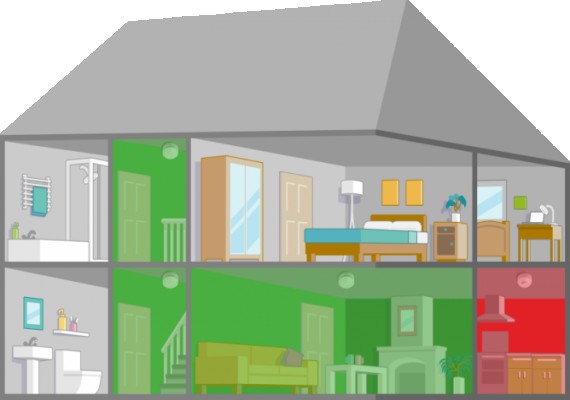02 October 2025


Mile End Business Park, Maesbury Road, Oswestry, Shropshire, United Kingdom, SY10 8NR
T: 01691 664100
E: enquiries@aico.co.uk
W: https://www.aico.co.uk/products/
There are more residents in the UK than ever, and with more homes needing to be built, social landlords must understand fire safety rules to better protect their residents.
Legislation surrounding fire safety has become increasingly stringent since the tragic Grenfell Tower fire in 2017, placing more responsibility on social landlords and housing providers.
Navigating the Current Housing Fire Safety Legislation
The Smoke and Carbon Monoxide Alarm (Amendment) Regulations 2022 is the current fire safety legislation for properties in England and specifies at least one smoke alarm to be installed on each storey of the property, where there is a room used for living accommodation. All private and social landlords must also install a CO alarm in any room of a property that contains a fuel-burning appliance (cookers excluded). The law states no specification on what grade alarms should be installed or if they should be interlinked.
However, British Standard BS 5839-6:2019:A1:2020 recommends that a rental property be fitted with a Category LD2 system of Grade D1 mains-powered alarms with a tamperproof battery. In line with these recommendations, a heat alarm should be installed in every kitchen, as well as a smoke alarm in the principal habitable room and escape routes.
Document B covers the building regulations for properties in England and Wales, stating a minimum of Grade D2, Category LD3 system – meaning mains-powered alarms with an integral user-replaceable back-up power supply within the escape routes of the property (i.e hallways and landings). The regulations also require a heat alarm to be installed in any kitchen when the kitchen is not separated from an escape route by a door. According to Document B, all alarms should be interlinked.
Fire Safety Best Practices for Housing Associations and Landlords
Meeting housing compliance best practice in the UK means having a clear and proactive approach to fire safety. Whether you manage a single rental home or oversee safe social housing, it’s vital to follow a structured process that covers both prevention and response.
1. Fire Risk Assessments and the Fire Safety Audit Process
2. Alarm Systems and Scheduled Fire System Checks
3. Tenant Awareness and Ongoing Fire Safety Training
4. Record Keeping and Digital Compliance Tools
Partnering with Aico to Protect Your Residents
Beyond supplying market-leading products, Aico offers ongoing support that makes a real difference. From installation advice and compliant alarm installation guidance to ongoing fire safety training, CPD-accredited events, and resources that strengthen tenant fire awareness, Aico ensures that housing providers are never working in isolation.
Explore Aico’s full product range, download best-practice guides, or request a consultation today to take the next step in your fire safety planning.